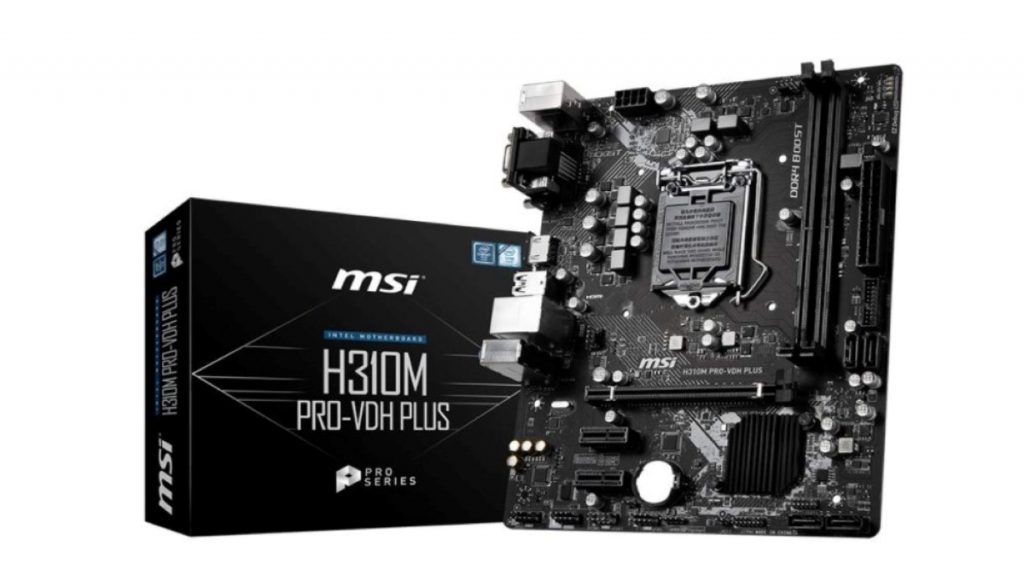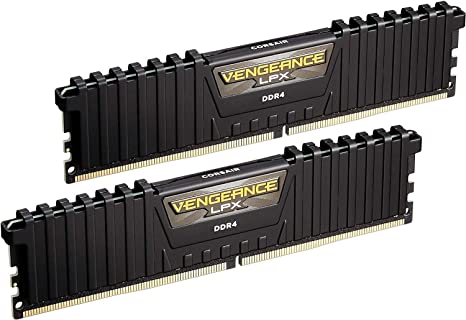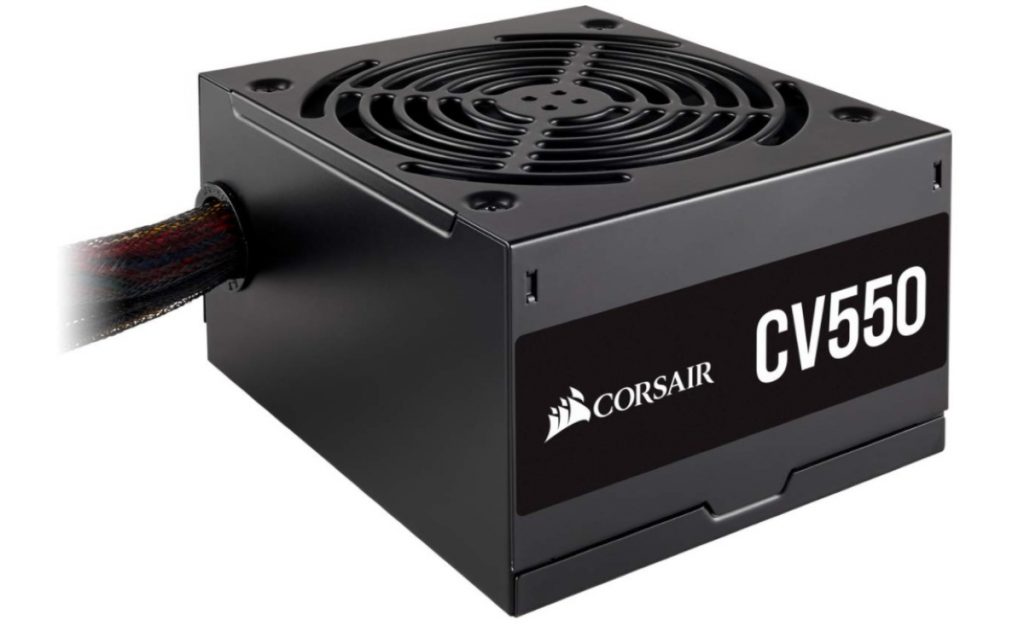Building a PC saves you a lot of money and also provides you with the ability to customize and upgrade your PC to your heart’s content.
That’s why we are here to tell you about the best all-rounder PC Build Rs 50K which will take your productivity to the next level and also will let you play games at 1080p High-Resolution settings at high FPS. We have accounted for the people’s needs and we have suggested both Intel and AMD Builds for you guys to choose which is best for you.
Note: I would personally suggest AMD build because it has a better upgrade pathway and provides more value for money.
This PC can handle everything with ease be it Video Editing, Music Production, and even Gaming. Here is the detailed list of the parts to build a PC under Rs 50K.
Table of Contents
Parts for PC under ₹ 50K
1) CPU
AMD Ryzen 5 3500

Ryzen 5 3500 is one of the best budget CPUs in the market. It’s based on the 7nm Zen 2 Architecture with 6 cores and 6 threads (no SMT support) and boosts to 4.1 GHz. Its great IPC (Instructions per Clock) along with a relatively low TDP (Thermal Design Power) of 65W and a well-performing in-box cooler makes it the best CPU in the market not only for gaming but also for productivity.
Performance Specifications
| No of Cores | 6 |
| No of Threads | 6 |
| Base Frequency | 3.60 GHz |
| Max Turbo Frequency | 4.10 GHz |
| Cache | L1: 768KB, L2: 4MB, L3: 16MB |
| Unlocked | Yes |
| Socket | AM4 |
| Architecture | 7 nm Zen 2 |
| TDP | 65 W |
| In Box Cooler | Included, Wraith PRISM Cooler |
Amazon | Click to Buy Now
Intel i5 9400F

For those who are looking for Intel, we have got you covered. I5 9400f is intel’s one of the best budget offerings. It’s equipped with 6 cores and 6 threads based on 14nm++ Coffee Lake Architecture with turbo up to 4.1 GHz and an included-in box cooler, so you don’t have to spend extra to get an aftermarket one. The F in the name signifies no discrete integrated graphics which is not a problem because we are using a Discrete GPU anyway.
Performance Specifications
| No of Cores | 6 |
| No of Threads | 6 |
| Base Frequency | 2.90 GHz |
| Max Turbo Frequency | 4.10 GHz |
| Cache | 9 MB Smart Cache |
| Unlocked | No |
| Socket | LGA 1151 |
| Architecture | 14 nm Coffee Lake |
| TDP | 65 W |
| In Box Cooler | Included |
Amazon | Click to Buy Now
Note: We would recommend going with the AMD versions because of its better performance (due to better IPC and thermals) and better upgrade path overall making it the better value for money CPU.
2) Motherboard
ASRock B450-HDV
This motherboard has the AM4 socket to accommodate the Ryzen 5 3500X and also supports overclocking, so you can extract every last drop of performance from your system if you want. It’s nothing too fancy but it is an entry-level motherboard that will get you started for building your PC and offers upgradability to higher-end 3rd Gen Ryzen CPUs and are most likely to support the Ryzen 4th Generation CPUs.
Amazon | Click Here for the best deal

MSI H310M PRO-VH PLUS

This is also a budget level motherboard with LGA 1151 Socket to accommodate the i5 9400f. This basic motherboard will serve just fine for your build.
Amazon | Click Here for the best deal
3) RAM
Corsair Vengeance LPX DDR4 16 GB (8×2) 3000MHz

16 GB is a good amount of Memory for most tasks and buying two RAM sticks lets you to take advantage of Dual Channel Memory. Higher speed is incredibly helpful for Ryzen processors (Because of the infinity fabric between the chiplets which can communicate
faster with Faster RAM) making 3000MHz ram ideal for this build especially so because its only slightly more expensive or at times cheaper than its 2400 MHz counterpart.
Note: We would recommend you to get the 2 single sticks of Corsair Vengeance LPX DDR4 8GB 3000MHz RAM because they are usually cheaper.
Amazon | Click to Buy Now
4) GPU
Nvidia GeForce GTX 1660

Under the price of Rs 20,000, (around ₹17k) it would be foolish not to pick one of these up. It’s one of the best value-for-money GPU available in the market. 1660 is equipped with 1408 CUDA cores, 6 GB GDDR6 memory with 192-bit memory bus and a memory speed of 12 Gbps. You will be able to play modern AAA titles at 1080p Resolution with detail levels set to Highest Quality at a 60+ FPS and eSports titles at way over 144Hz.
Features
| CUDA Cores | 1408 |
| Base Frequency | 1530 MHz |
| Max Turbo Frequency | 1785 MHz |
| VRAM | 6 GB GDDR5 |
| Memory Speed | 8 GB/s |
| TDP | 120 Watts |
| Architecture | 12 nm Turing Architecture |
| Real time Ray Tracing | Not supported |
Amazon | Click to Buy Now
5) PSU
Corsair CX 550

PSU is the part most people compromise on whenever on a budget. But you shouldn’t because it powers all the components of the system and if its faulty or even if it’s not a good quality PSU your whole PC component maybe damaged, even burnt. That’s why we
recommend you to get at least a 450W PSU with a minimum rating of 80+ white. With a midrange build like this you should go with the Corsair CX 550, with has a 80+ Bronze rating and a total wattage of 550W.
Amazon | Click to Buy Now
6) CABINET
ANTEC NX230 MID-TOWER CASE

This cabinet packs all the high end features you case imagine for an incredibly low price. It has Top and Bottom Dust filters, Front RGB, a PSU shroud and a fully transparent acrylic panel on the side for you to show off you PC to others.
Amazon | Click to Buy Now
7) STORAGE
WD BLUE 500 GB SSD

These days SSD’s are a must-have, so we have included one for this build. This one takes advantage of m.2 PCIe technology (this SSD can be placed in the motherboard’s M.2 slot). Its sequential read and write speeds are up to560 MB/s and 530MB/s respectively. It will improve the snappiness of your PC and make your experience a lot more enjoyable.
Note: If you need more storage then you should get a smaller SSD and a 1TB HDD.
Amazon | Click to Buy Now
CONCLUSION
So, that’s it for this article if you have any questions feel free to ask us in the comments down below and if you like it please share it with friends and family.
You can Read all our PC Builds Here!
FAQs
If one has the budget to buy either an SSD or HDD, he/she should go for the SSD. There are many reasons why SSDs are better than HDD a few of which are listed below:
1) SSDs are much faster than HDDs in terms of sequential read and write speeds. That is why SSD reduces load times of apps and makes the experience much snappier.
2) SSDs also don’t have any moving parts like HDDs, which means they are much less prone to stop working.
3) Since 2019, SSD prices have significantly reduced. Nowadays a decent 500 GB SATA SSD costs close to a 1 TB HDD.
HDDs are still the best option if you need lots of storage, but we would recommend getting a small SSD for the OS and frequently used apps and HDD for the large files.
If you have a limited budget and are planning to get a PC and are confused about whether to build or buy a PC, we would recommend you building your PC instead of buying it. You can make an exception if you don’t have time and don’t want to go through the hassle of building a PC. The reasons why you should build a PC are listed below:
1) You can build a PC at a much lower price when compared to buying the same PC with the same specs.
2) Building a PC is very simple; anyone can do it and thus save some money by not going for a pre-built PC.
3) You can customize your PC the way you want it.
4) You will learn the technicalities of a PC while building it.
If you are confused if you want to get a laptop or a PC, then the most important question one must ask is whether you are planning to use it outdoors. If the answer is yes, then you need a laptop and if no then building a PC is your PC is the best bet.
SMT (Simultaneous Multi-Threading) is a process by which a CPU divides its physical cores into virtual cores called threads. Hyper-Threading is Intel’s term for SMT. It enables each core to run two tasks at once. SMT increases the efficiency of the CPU and allows the CPU to execute several tasks simultaneously or run multi-threaded workloads with ease. Most high-end modern-day CPUs have SMT nowadays.
RAM communicates with the PC with the help of a memory controller present on the CPU using a bus, called memory bus. These memory controllers have multiple channels for communicating with the RAM—the more the number of channels, the faster the communication. Memory controllers with one channel, two channels, four channels, six channels, and eight channels are available in the market. The most common is dual channels, while six-channel and eight-channels are reserved for server CPUs.
80+ certification is a standard that validates that the PSU provides 80% or more efficiency at all loads (25%, 50%, 75%, and 100% of full load). The 80+ certification has expanded and now includes 80+ Bronze, Silver, Gold, Platinum, and Titanium certifications. To get a better idea of the efficiencies corresponding to the different 80+ standards, take a look at the image below:
Follow us on Google News for more updates.


